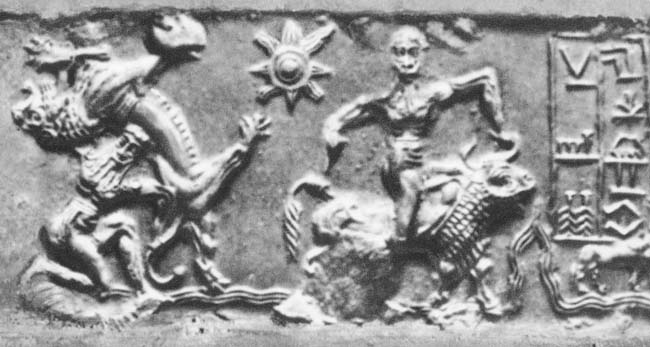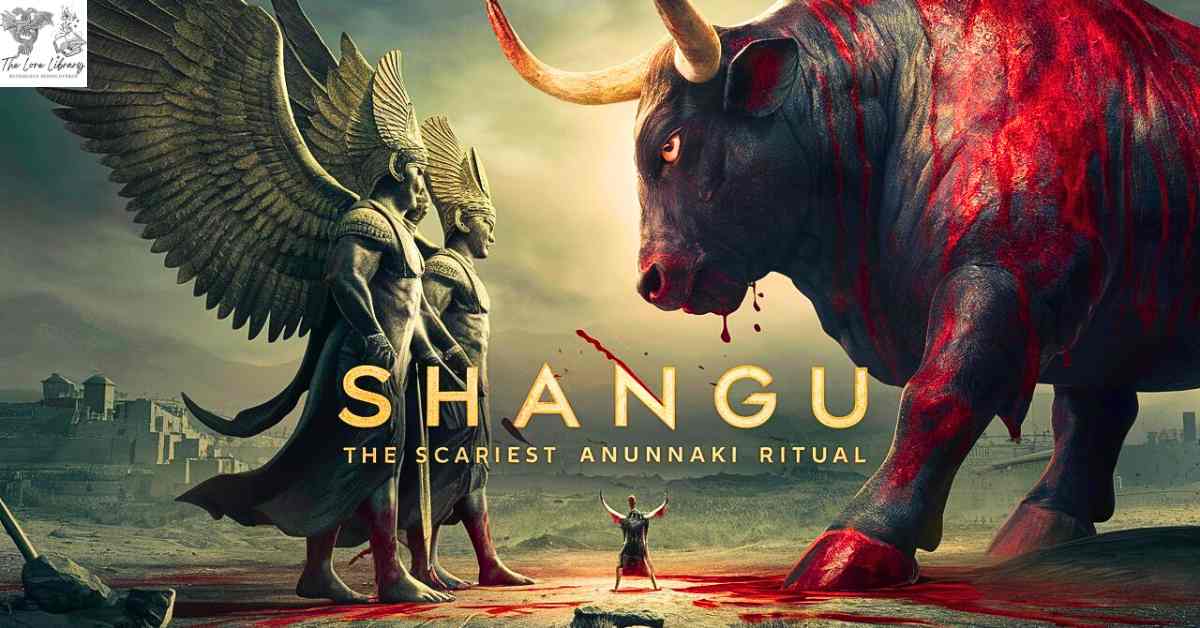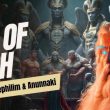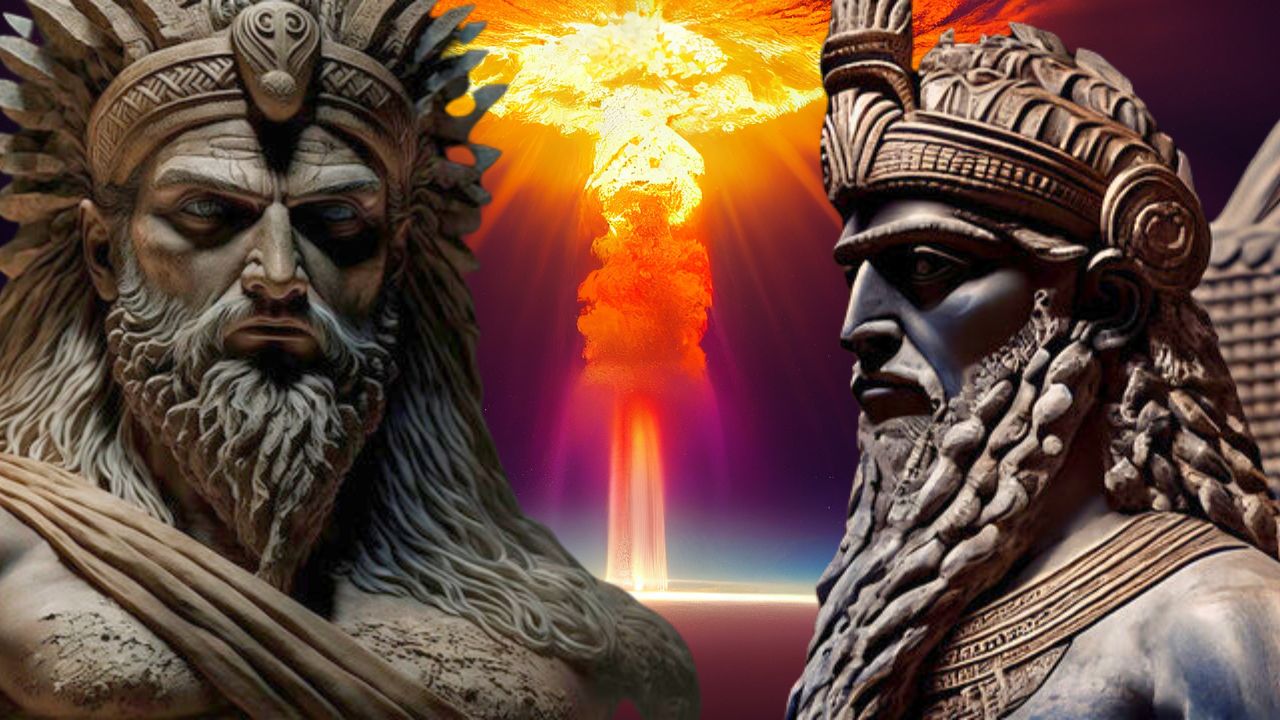Today we will learn about the shangu, the Babylonian sacrificer, which is one of the five titles used by the priesthood of Babylon. In Sanskrit, shangu or shamgu means any evergreen plant of the parasitic mistletoe, and of course, this is the root for the “kiss under the mistletoe.” Shamgu means doubt, suspicion, hesitating or feeling hesitant from uncertainty, lack of confidence, hesitation, an anxious feeling, fear, or apprehension. To kiss under the mistletoe, under the parasitic tree of love and fertility. This would be the product of the shangu: fear, the food of the Gods.
The letter Z became an S, which became, Ssh.. (you won’t believe who it belongs to), like Superman. This River of Hope refers to the river god of the Sumerian Heaven, the underworld. It belongs to Zu and Shamash, as Sin and Sham are cognates.
What Does Shangu mean?
Sin or Sham. S= Sin + AN = Shan or Sham i.e Sangu, Samgu or Shamgu.
Sham can mean renown, i.e. the men of renown or devoted to God’s destruction. I think you’ll agree that would be cognate with sin.
And of course, it is Sin, Zu alternatively Shin. This is where many make a great mistake. Zu – knowledge, wisdom, to teach. The ignorance comes from overlooking the other meanings: obsidian blade or tooth. In Hebrew, shin (sin) means tooth, hence the symbol W, which represents the teeth of Lord Zu, the moon God of Ur, the wolf.
Sin, shin, sham literally mean tooth. It is the 21st Hebrew letter relating to Uzna or Debarra, fire and transformation, very similar to the three tribes of Fallen Angels. The shape of shin has three branches of flame, and Flame in Hebrew means “demonic agency”. These are the three pillars of the Tree of Life, reaching like high flames, purifying and changing the condition of our lives.
Shangu and the Anunnaki Connection
The S, transliterated as Shin or sin or Sheen, when you “Sheen” you shine like a reflective surface. Zu meaning mirror. And of course, the Anunnaki, their names change but their number, seven, does not. The gods, once demons, once monsters. Shin (tooth) is the 21st letter. This, of course, gave rise to the Greek Sigma, which in turn gave us the S and the Cyrillic C, So the teeth become the Trident, the god of the waters and his three demonic agencies.
The letter S plus An means star, sky, and heaven. The god, an eagle. Gu is a wee bit tricky. Gu is cognate with Zu, both can mean voice. The S belongs to Lord Zu, the weapon of the Gods, their Oracle, and messenger, and identifies him as the god of the Sumerian heaven, the underworld. And as mentioned, gu can mean voice, but the voice for what?
Gu – neck, nape, river bank, side, other side, edge, front, land, pulse, chickpea, gun (to load something with talent, I don’t know, possibly with wisdom), gu cognate with good, and do good, bull, ox or c (the sound of a bull or the grunting and panting of battle). And a particular group of people are going to slay the bull of Heaven. Go, cognate with gu, noise, sound, voice, to exclaim, to utter a cry (said of an animal), there will be throat cries and screams.

How Greek Culture is influenced by Shangu?
In the ancient Greek culture, the people did not eat meat apart from on special occasions, for example, a festival. But if you consume the food offerings to the gods, you are cursed. So what is the Greek culture doing to its people?
Gu, gu – food, sustenance, fodder, angle (to eat, swallow, consume, use, to eat up, finish off, to feed, nurse, benefit). I can say this is not looking good, not at all, because gu is cognate with sin (to finish off, swallow, consume). This, my dear friends, is the Beast, the god of the Gods, of the Gods once demons. Bless you, forget the official term refers to a sacrificer.
You may think this is Pazuzu, and you would be correct, but it is also Humbaba, the precursor to Pazuzu, the precursor to Phobos, fear personified, the predecessors of Medusa. And how is she defeated? With a mirror, by a shield with a Sheen, which of course petrifies her. S, tooth and God, gu – sacrifice together meaning the sacrifices for Lord Zu.
Apparently, there is no connection to Hebrew and Sumerian. But there is.
References:
- Black, J. A., Cunningham, G., Robson, E., & Zólyomi, G. (2004). The literature of ancient Sumer. Oxford University Press.
- Dalley, S. (2008). Myths from Mesopotamia: Creation, the flood, Gilgamesh, and others. Oxford University Press.
- Falkenstein, A. (1966). Die haupttypen der sumerischen beschworung: Literarische keilschrifttexte aus Uruk. Akademie-Verlag.
- Jacobsen, T. (1976). The treasures of darkness: A history of Mesopotamian religion. Yale University Press.
- Kramer, S. N. (1963). The Sumerians: Their history, culture, and character. University of Chicago Press.
- Simple English Wikipedia. (2024, May 19). Mistletoe. https://simple.wikipedia.org/wiki/Mistletoe
- Wikipedia. (2024, May 19). Anunnaki. https://en.wikipedia.org/wiki/Anunnaki
- tunesharemore_vert
Shop amazing Anunnaki Merchandise at our store, Follow us on Facebook, Instagram, And For More Interesting Content Also Subscribe To Our Youtube Channel.










